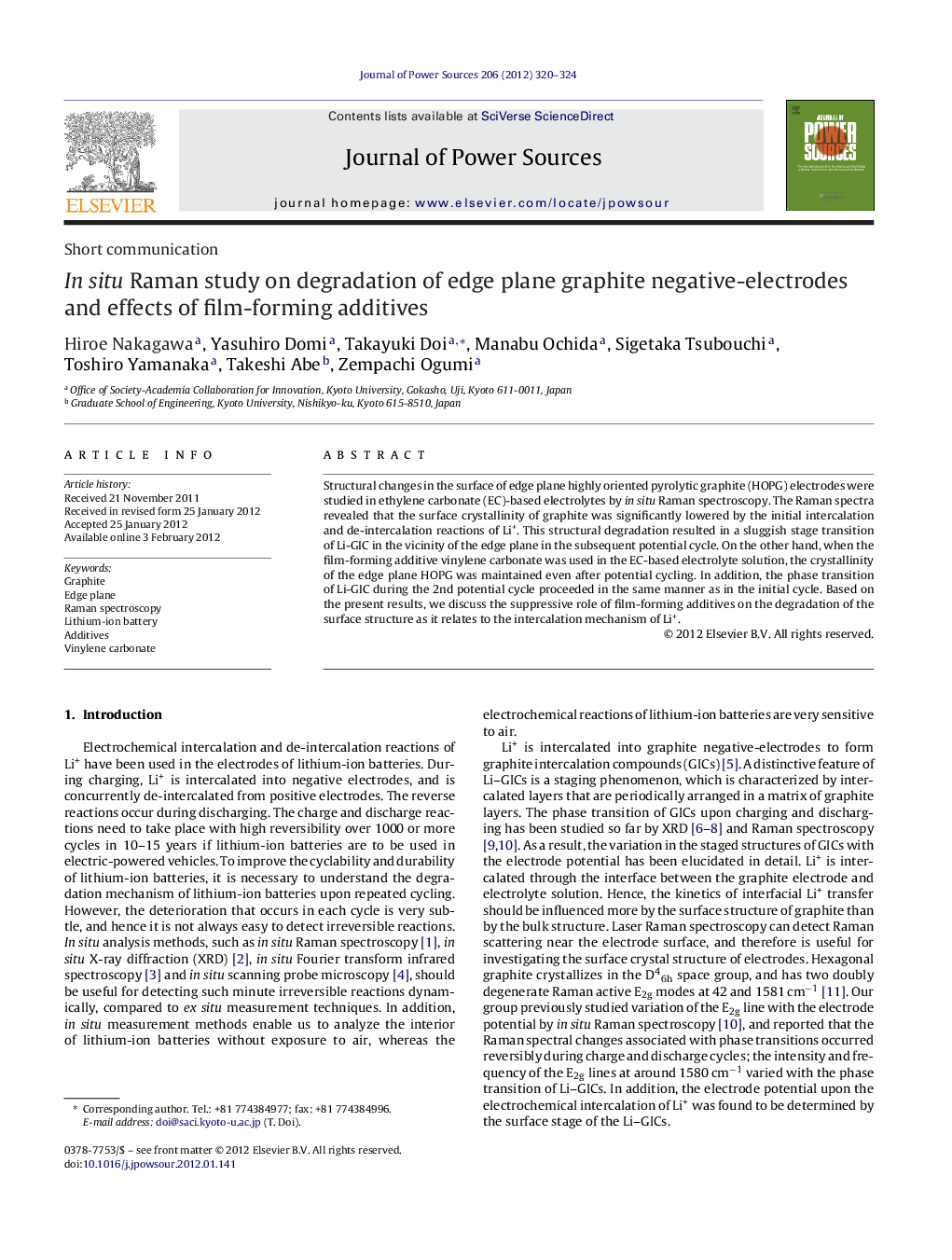| Article ID | Journal | Published Year | Pages | File Type |
|---|---|---|---|---|
| 1293093 | Journal of Power Sources | 2012 | 5 Pages |
Structural changes in the surface of edge plane highly oriented pyrolytic graphite (HOPG) electrodes were studied in ethylene carbonate (EC)-based electrolytes by in situ Raman spectroscopy. The Raman spectra revealed that the surface crystallinity of graphite was significantly lowered by the initial intercalation and de-intercalation reactions of Li+. This structural degradation resulted in a sluggish stage transition of Li-GIC in the vicinity of the edge plane in the subsequent potential cycle. On the other hand, when the film-forming additive vinylene carbonate was used in the EC-based electrolyte solution, the crystallinity of the edge plane HOPG was maintained even after potential cycling. In addition, the phase transition of Li-GIC during the 2nd potential cycle proceeded in the same manner as in the initial cycle. Based on the present results, we discuss the suppressive role of film-forming additives on the degradation of the surface structure as it relates to the intercalation mechanism of Li+.
► Structural degradation of edge plane graphite is investigated by in situ Raman spectroscopy. ► Surface crystallinity of the edge plane significantly lowers within only a single potential cycle. ► The surface crystal structure is maintained even after cycling with the use of vinylene carbonate.
